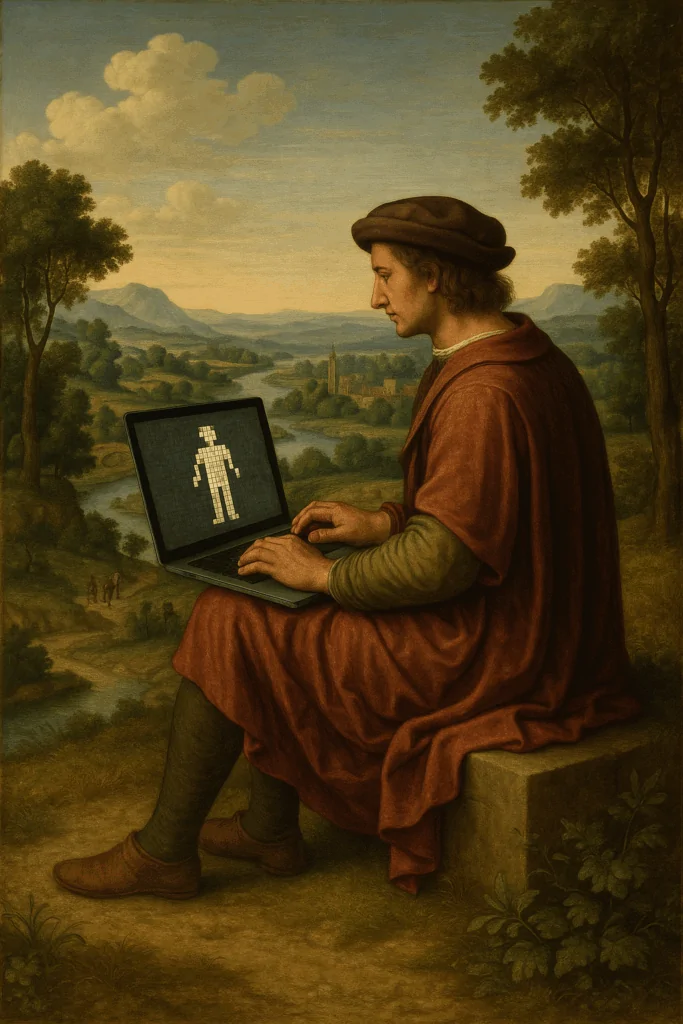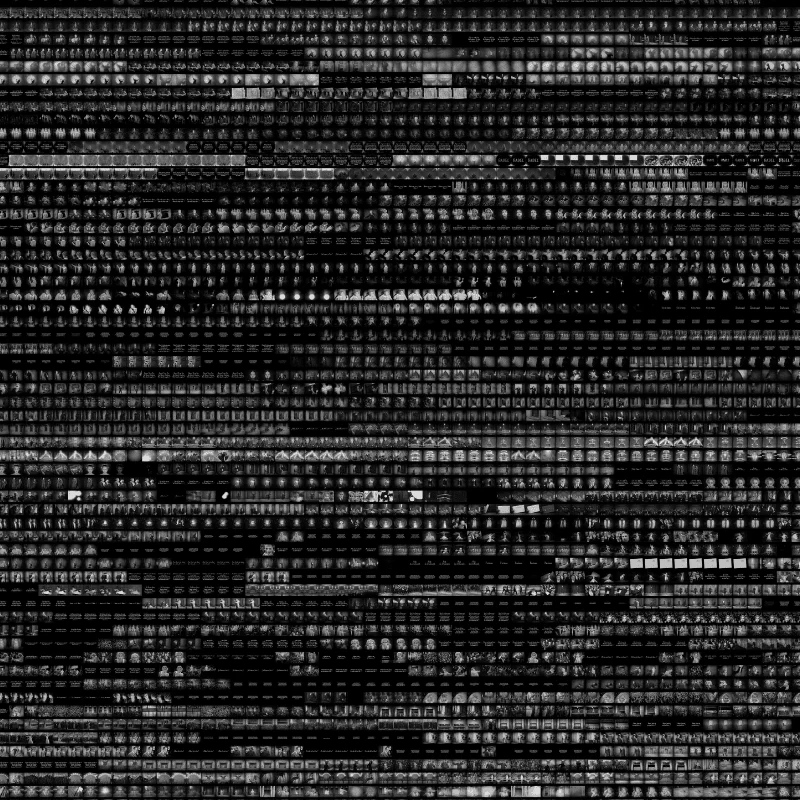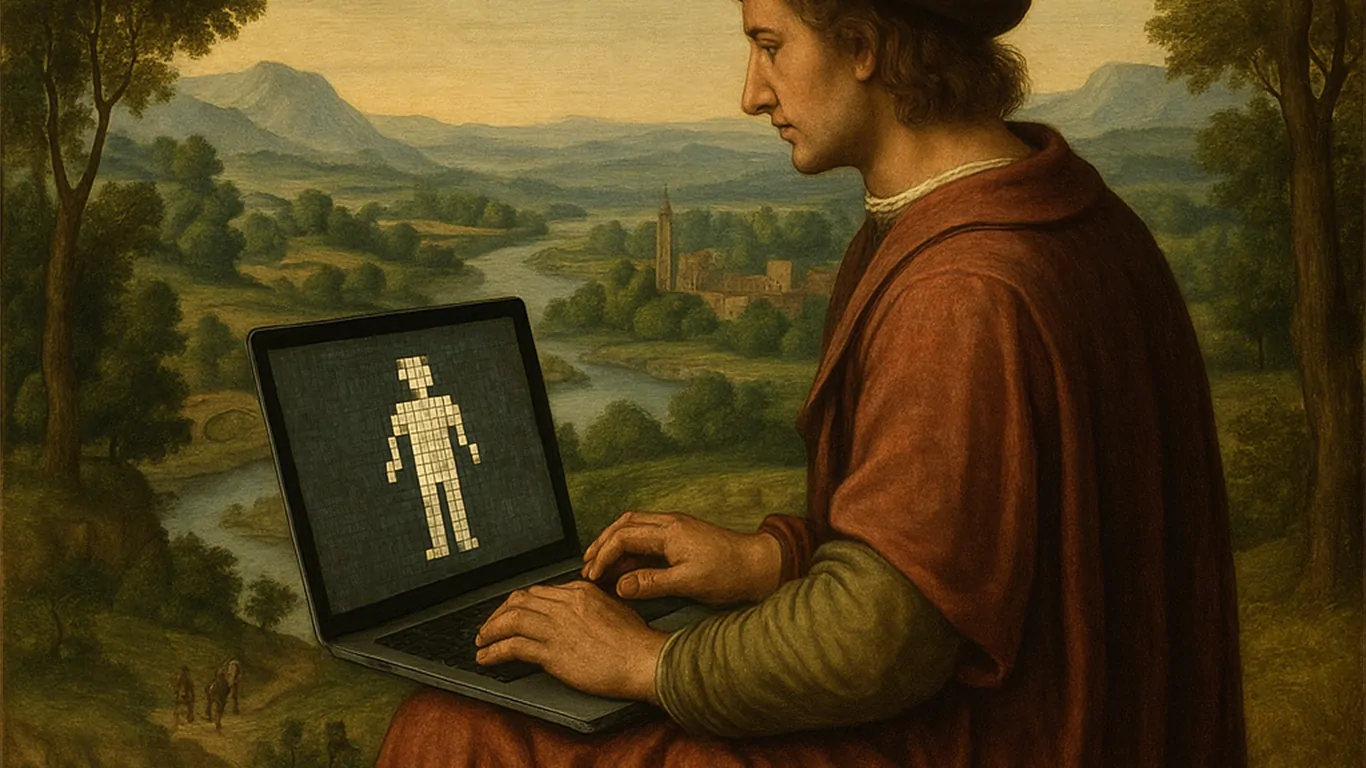A revolution is unfolding in the art world. As AI tools proliferate, artists and audiences are rediscovering the value of touch, tradition, and human connection.
Something subtle but powerful is happening in the art world. After years of digital innovation and algorithm-driven creativity, we’re seeing a quiet return to something older, slower — and more personal. From the revival of traditional craft to a renewed appetite for physical exhibitions, artists and audiences alike are rethinking what it means to make art in the digital world.
This shift doesn’t ignore technology. The past few years have brought an explosion of creative tools — from digital platforms to AI-based software — that have redefined how images are made and shared. These innovations have expanded access to creativity and reshaped expectations. But “Human After All” may best describe the mood in 2025: a growing desire for tactility, imperfection, and emotional connection in an age of automation.

Credit @pourlarte
According to the UBS and Art Basel Art Market Report 2024, global art sales rose by 7%, reaching $68 billion, with most of the growth coming not from digital-only formats, but from physical, handcrafted works. Meanwhile, sales of NFTs and purely digital creations dropped by nearly 50%. Even in a hyperconnected culture, people are looking for artwork that feels rooted — in story, in material, and in human experience.
That’s what makes art in the digital world so complex right now. It’s no longer about choosing between tradition and technology, but about finding meaning in the overlap. Artists are turning to techniques like woodcut printing, mosaic work, handwoven textiles, and kintsugi — the Japanese art of repairing ceramics with gold — not to escape modernity, but to restore a sense of care and presence.

© Sougwen Chung
The same is true of physical spaces. From the Cairo Contemporary Art Museum to Tokyo’s Museum of Digital Humanity, institutions are blending ancient and modern, analogue and immersive. People aren’t abandoning screens — they’re balancing them. And in doing so, they’re redefining what “art in the digital world” can actually look and feel like.
Even artists working with technology are asking more thoughtful questions. Take Sougwen Chung, who paints in tandem with robotic arms that mirror her own gestures. Her work doesn’t replace human creativity — it expands it. Or consider Brendan Dawes, a British artist whose practice merges data, code and physical materials into poetic objects. Whether crafting 3D-printed sculptures from motion data or visualising digital memories, Dawes’s work is a reminder that digital tools can be used to reveal — not erase — the human presence.

The UBS report also highlights growing interest in mid-career artists, many of whom work in tactile media and draw from personal and cultural narratives. At the same time, artists from Southeast Asia, Latin America and sub-Saharan Africa are gaining wider recognition, as collectors seek voices that reflect lived experience — not just aesthetic novelty.
This all points to a broader cultural recalibration. After years of rapid digital acceleration, the art world is pausing to ask: not just what can be made, but why, by whom, and for whom?
Art in 2025 is bold, inclusive, and boundary-breaking. It doesn’t sit quietly in galleries — it speaks, challenges, and invites participation. From the resurgence of handmade traditions to the rise of global voices and new forms of storytelling, the art world continues to evolve in unexpected and powerful ways.
Whether you’re watching auctions, creating canvases, or simply appreciating beauty — one thing is clear: “Human After All” isn’t just a phrase. It’s a reminder that even in the heart of the digital world, art remains the heartbeat of human expression.





